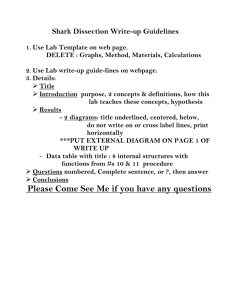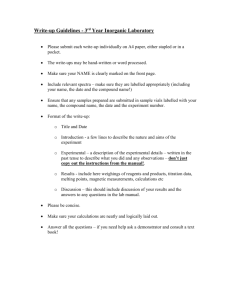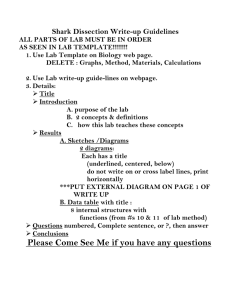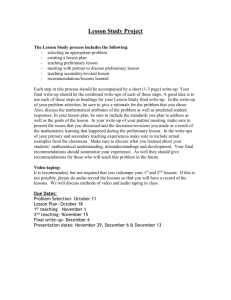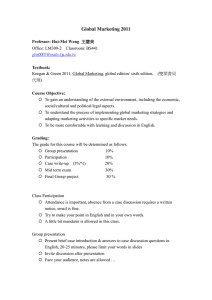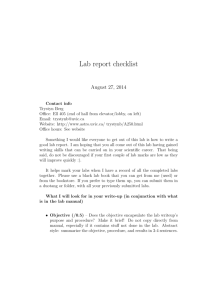Lab Policies
advertisement
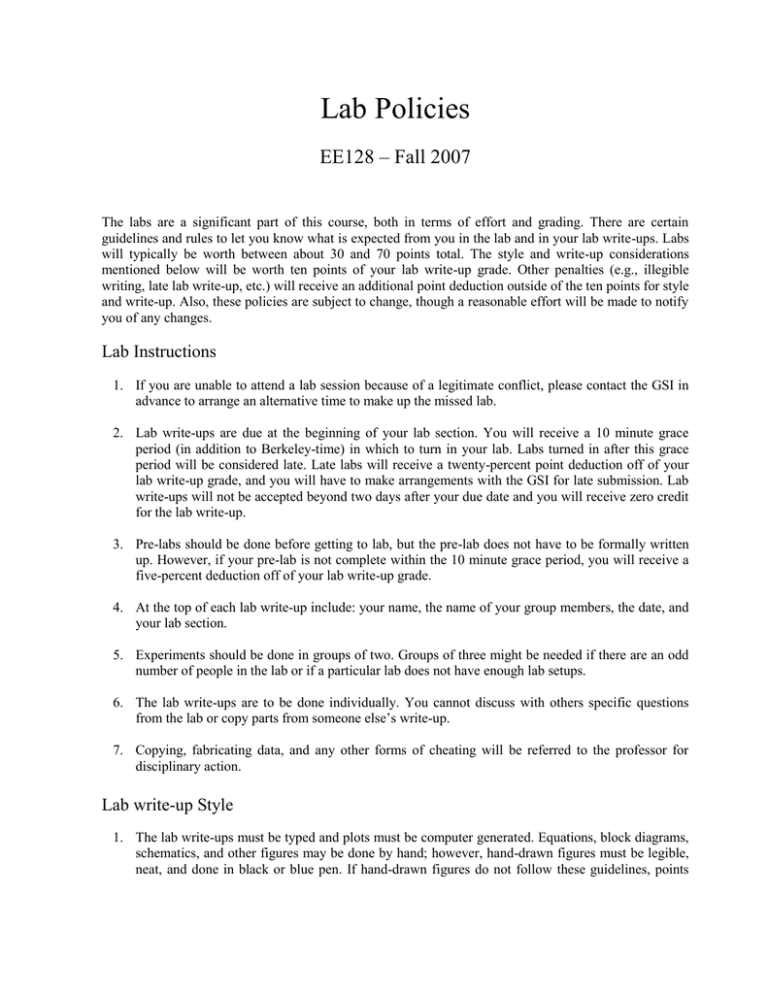
Lab Policies EE128 – Fall 2007 The labs are a significant part of this course, both in terms of effort and grading. There are certain guidelines and rules to let you know what is expected from you in the lab and in your lab write-ups. Labs will typically be worth between about 30 and 70 points total. The style and write-up considerations mentioned below will be worth ten points of your lab write-up grade. Other penalties (e.g., illegible writing, late lab write-up, etc.) will receive an additional point deduction outside of the ten points for style and write-up. Also, these policies are subject to change, though a reasonable effort will be made to notify you of any changes. Lab Instructions 1. If you are unable to attend a lab session because of a legitimate conflict, please contact the GSI in advance to arrange an alternative time to make up the missed lab. 2. Lab write-ups are due at the beginning of your lab section. You will receive a 10 minute grace period (in addition to Berkeley-time) in which to turn in your lab. Labs turned in after this grace period will be considered late. Late labs will receive a twenty-percent point deduction off of your lab write-up grade, and you will have to make arrangements with the GSI for late submission. Lab write-ups will not be accepted beyond two days after your due date and you will receive zero credit for the lab write-up. 3. Pre-labs should be done before getting to lab, but the pre-lab does not have to be formally written up. However, if your pre-lab is not complete within the 10 minute grace period, you will receive a five-percent deduction off of your lab write-up grade. 4. At the top of each lab write-up include: your name, the name of your group members, the date, and your lab section. 5. Experiments should be done in groups of two. Groups of three might be needed if there are an odd number of people in the lab or if a particular lab does not have enough lab setups. 6. The lab write-ups are to be done individually. You cannot discuss with others specific questions from the lab or copy parts from someone else’s write-up. 7. Copying, fabricating data, and any other forms of cheating will be referred to the professor for disciplinary action. Lab write-up Style 1. The lab write-ups must be typed and plots must be computer generated. Equations, block diagrams, schematics, and other figures may be done by hand; however, hand-drawn figures must be legible, neat, and done in black or blue pen. If hand-drawn figures do not follow these guidelines, points will be deducted. If you are in doubt about the quality of your figures or drawing ability, make them on a computer. 2. If you use MATLAB or SIMULINK for plots or calculations, you must include all accompanying code and system diagrams. The code and system diagrams should also be labeled. It is good practice to put your MATLAB code into separate M-files for record-keeping and to include your name in the comments of your code. 3. All figures, plots, and code must be labeled, including hand-drawn figures. The labels should describe what a figure is, without having to reference any other information. The labels can be done by hand if appropriate and reasonable, while following the guidelines on hand-drawn figures. 4. Lab write-ups should be self contained. What this means is that the lab write-up should make sense without having to reference the lab manual. This includes things such as: Answers to questions from the lab manual should include the question itself; you do not have to copy the question, but you should incorporate the question into the answer itself. Figures (e.g., schematics, block diagrams) of the system being analyzed should be included in the lab write-up. All analysis and derivations should be shown. Explain your answers; your line-of-reasoning should be included. 5. The lab write-up should generally contain the following sections: Purpose - This should be a short, introductory paragraph on the objectives or goals of the lab and what general tasks you did in the lab. Pre-lab - If the lab has an associated pre-lab, include all the pre-lab analysis and questions in your formal lab report. Procedure - This section should include what you did in the lab, problems you had in the lab and how you dealt with those problems, and measurements you made; also, include anything that is different, unique, or novel about your procedure. Analysis - This section should include the analysis of the system as well as the analysis of the data from the lab. Conclusion - This should include several parts including a section comparing theory to the experiment and another section on what you learned in the lab. Make sure to discuss the reasons for any disagreement between theoretical predictions and experimental results and make suggestions on how to reduce this disagreement, if possible. 6. You are free to split the procedure (and analysis) section into smaller sections, if you feel the need to do so. The only set constraints are the purpose, pre-lab, and conclusion sections. You can organize the other sections however you want as long as you include the above, general ideas.
